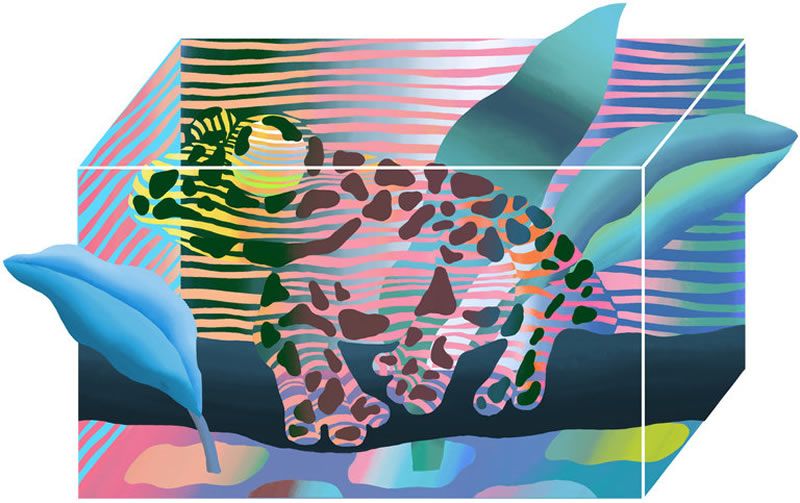
Two weeks ago, the last known Rabbs’ fringe-limbed tree frog died in a biosecure safehouse at the Atlanta Botanical Garden. Its distinctive, barklike call was last heard in the wild, as far as we know, in a Panamanian forest in 2007.
I was among a group of biologists who discovered this species in 2005 in the canopy of a cloud forest in central Panama. We documented a remarkable behavior never seen in any other animal. The males stayed with their tadpoles in small water-filled cavities high in the trees. These tiny arboreal ponds lacked sufficient food for the tadpoles, so the male would lower himself into the water, allowing his offspring to rasp the skin from his back for nutrition.
In this way, this species was able to perpetuate itself in the only place on the planet it was known to exist, near the town of El Valle de Antón. At the time of our discovery, nearby forests were being cleared for luxury vacation homes and it seemed now only a matter of time before the developers would reach the mountains where these frogs glided from tree to tree, catching air with their extensive toe webbing.
But what proved to be a more pernicious threat was also afoot, destroying amphibian populations throughout the forests of Central America: an infectious skin disease called amphibian chytridiomycosis that had been unleashed among wild amphibians almost certainly by human activity. Dozens of frog and toad species were driven extinct.
That’s why we were in Panama in 2005. We were on a salvage mission, hoping to catch representatives of as many threatened amphibian species as we could in advance of the epidemic. Our plan was to place them in breeding programs and reintroduce them into the wild after the scourge had passed.
We named our discovery after the noted conservationists George B. Rabb, the former director of the Brookfield Zoo in Chicago, and his biologist wife, Mary.
Within two years, the frog had all but disappeared. No further trace of it has been found in the wild since, despite persistent searches by Panamanian colleagues.
Rabbs’ frogs had survived well in safekeeping, but experts at El Valle Amphibian Conservation Center in Panama, Zoo Atlanta and the Atlanta Botanical Garden who were trying to assure the species’ survival never discovered the secrets of how they reproduced. When the last female died in 2009, leaving two males, I had to come to grips with the virtual extinction of the species.
Now we seem to have moved to its actual extinction. The planet is permanently changed. This frog’s ecological role among the animals and plants with which it evolved has been lost, along with whatever other secrets it carried.
Extinction is one of the realities of the new geologic age we inhabit, the human-driven Anthropocene. The origin of the fungal infection that doomed the Rabbs’ frog remains unknown, though its rise clearly seems linked to the global trade in amphibians.
Snakes, bees, starfish, corals, great apes and bats are suffering similar incursions and have become victims of pathogens spread unwittingly by human travel, commerce and other activities. These emerging infectious diseases have become a hallmark of our age.
The chytrid fungi proved to be particularly intractable, and the United States government was slow to take steps to effectively regulate the cross-border trade in amphibians. The government has since become more aggressive in trying to halt the spread of yet another infection that has devastated salamander populations in Europe but not yet made it into the United States, home to the world’s greatest biodiversity of those amphibians.
The trajectory of this latest threat is familiar: Asian salamanders popular as pets were found to carry this fungus without getting sick, but it proved lethal to wild salamanders in Europe.
Fortunately, some populations of amphibians now appear to be evolving tolerance to these novel chytrid fungi, so they are recovering despite our own too-little, too-late, too-uninformed conservation efforts. For other populations, captive breeding programs are helping to usher some species through the storm of diseases.
Amphibians have shown us that reactive attempts in conservation may be ineffective. Indeed, the demise of so many amphibians was one of our early indications of what many biologists believe is a sixth major extinction now underway.
Emerging infectious diseases in wildlife, spread by global trade and transit, represent a real and present danger. Governments must aggressively police that threat with their powers to stop imports of nonnative species that could imperil native wildlife and plants.
In addition, the United States Fish and Wildlife Service should finance its international programs to protect amphibians at the level of projects to safeguard elephants, rhinos, tigers, great apes and marine turtles. Those undertakings received roughly five times more than the agency’s amphibian efforts in 2015.
As a scientist, I like to be right, but in this case, I hope I’m wrong. There is a chance that a population of Rabbs’ frogs remains hidden in the Panamanian forest. But if it is extinct, as the evidence suggests, this species will most likely remain a largely unknown casualty of the Anthropocene, another example of how we continue to ignore, if not deny, the threats of emerging infectious diseases to the other creatures that share our planet.
Joseph R. Mendelson III is the director of research at Zoo Atlanta.
